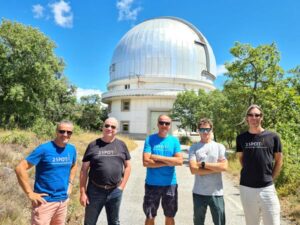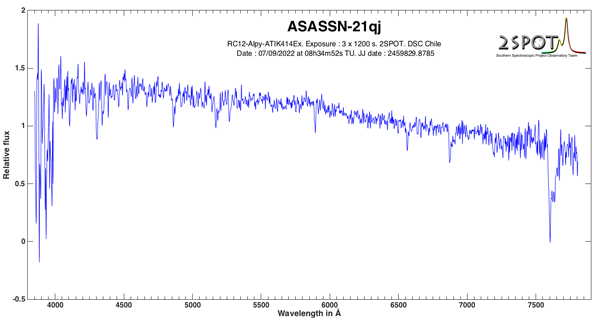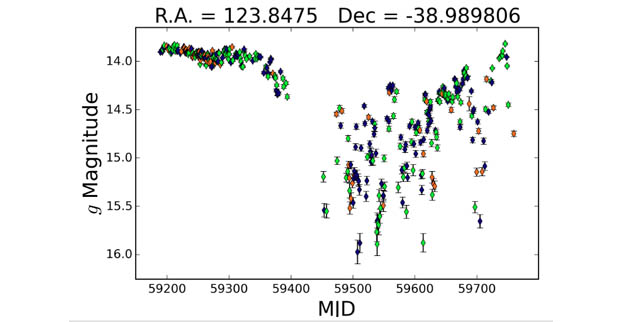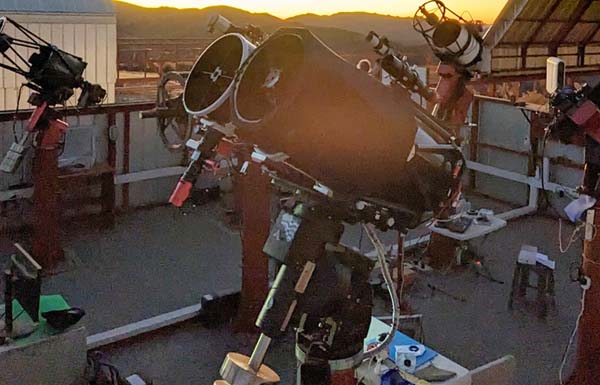
An exoplanet collision
How did a team of amateur astronomers become co-authors of an internationally renowned scientific publication?
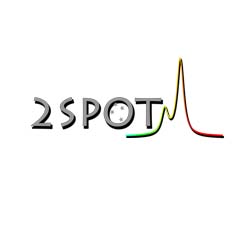
2SPOT
An association of amateur astronomers
2SPOT[1] is a public-interest scientific association created in 2019 by five amateur astronomers (Stéphane Charbonnel, Olivier Garde, Pascal Le Dû, Lionel Mulato and Thomas Petit) with the aim of setting up and remotely controlling an observatory in Chile. This facility is dedicated to spectral data acquisition. In particular, its mission is to respond rapidly to requests from professionals in the course of their work.
(Pascal, Olivier, Stéphane, Thomas, Lionel)
Observation equipment:
The 2SPOT installation, located on the company’s site Deep Sky Chile [2], is composed of two 0.3 m diameter telescopes:
• A Ritchey-Chretien telescope equipped with a medium-resolution spectrograph eShel (R=11000).
• A Newton-type telescope with a low-resolution spectrograph Alpy 600 (R=600).
To improve responsiveness, an automatic observation and processing protocol has been developed by the 2SPOT team with the help of a member of theStaros project [4].

Automatic observation is managed by thePrism software[5]. A script written by Stéphane Charbonnel manages spectra acquisition. The target is centered and positioned at the center of the spectrograph slit, and exposure times are calculated according to the target’s magnitude.
Calibration and uniform light images are taken at the end of the observation.
For processing, Matthieu Le Lain has designed an equally automatic “processing pipeline”, named ARP (Automatic Reduction Pipeline). Raw spectral data from an entire night are processed using the spec INTI software [6].
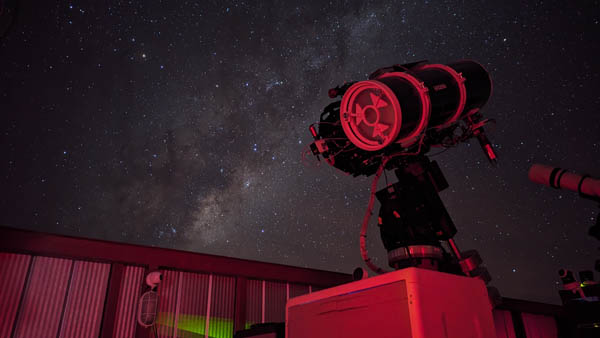
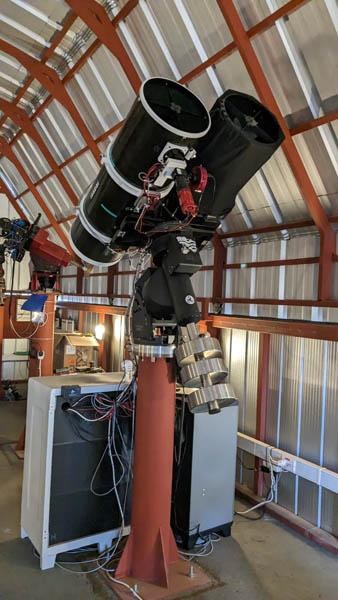
ASASSN-21qj, a target among many others …
The adventure begins with the publication of astronomical telegram N°15531 [7]. Magnitude variations are observed on the star ASASSN-21qj. At the time, the 2SPOT team had no knowledge of this document.
On September 6, 2022, Hamish Barker, an amateur astronomer and co-author of the publication and astronomical telegram mentioned above, suggested that 2SPOT observe ASASSN-21qj. Hamish, a specialist in photometry, points out that the star’s luminosity has dropped, and that this variation is unexpected (see the star’s light curve [8] on the right). A spectrum is required to find out more.
The observation of the star ASASSN-21qj is scheduled for the night of September 6-7, 2022. The object’s magnitude is 13.95, whereas it should be 13.8. ASASSN-21qj appears to be “masked”. As the star is close to the horizon and has a high magnitude, the ALPY 600 low-resolution spectrograph is used to meet the observing demand. On September 7, 2022, 3 exposures of 20 minutes each are made on ASASSN-21qj before daybreak. The reduced spectrum is sent to Matthew Kenworthy, the first author of the publication (ASASSN-21qj spectrum on the right). On receipt of the data, the latter was very enthusiastic and invited the 2SPOT team to be one of the co-authors of the publication.
Review
This teamwork and collaboration between professionals and amateurs resulted in an article in the prestigious scientific journal Nature. Matthew Kenworthy’s comment on the data submitted by the 2SPOT team is as follows:
« Although we were fairly certain that the star was a dwarf star on the main sequence, your spectra helped confirm that the star had absorption lines similar to our Sun. The spectra was one piece of the large puzzle that explains all the observations we had from many telescopes, and your ability to rapidly respond and obtain spectra on such a short time scale was crucial in this respect ».
The 2SPOT team was very responsive, which was greatly appreciated. As Matthew points out, the spectrum acquired on July 7 is just one brick that, when added to a wealth of data, has helped to explain the phenomenon probably observed on the star ASASSN-21qj.
2SPOT would like to thank the team of professionals who drafted this publication, and who insisted that all association members appear as co-authors.
The article was published in the journal Nature, Vol. 622 N°7982 from October 12, 2023.
[2] https://www.deepskychile.com/fr/
[4] https://staros-projects.org/
[5) https://www.prism-astro.com/
[6] http://www.astrosurf.com/solex/specinti1_fr.html
[7] https://www.astronomerstelegram.org/?read=15531
[8] https://asas-sn.osu.edu/sky-patrol/coordinate/c53412bc-d22e-40fc-8ca8-bde0b2e758d4

